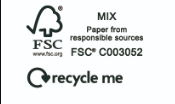Christmas waste prevention
November 7, 2023
From discarded wrapping paper to excess food, Christmas often generates a staggering amount of waste. However it doesn’t have to be that way. In this article we will explore practical ways to celebrate more sustainably.
Navigate to the section of most interest using the menu below:
Menu
Minimise packaging and deliveries from online shopping
Wrapping and decorating the presents
Christmas jumpers and festive clothing
Toys & Games
Many households with children plan on having a clear out of broken and unwanted toys to make room for new toys before Father Christmas visits.
Working toys and games in good condition can be sold, given away (for example see the Olio website) or donated to charity. Three charities specialise in giving unwanted toys a second life: Toys4life, Young Planet, The Toy Project. Many other charities will accept toys and games in good condition, but it’s worth checking if they’ll accept what you’d like to donate before arriving at one of their shops with a donation. The Charity Retail Association website has guidance on finding and contacting local charity shops.
It can be easy to forget that some toys & games contain batteries especially if they are old and are no longer working, but it’s worth the effort to check to prevent fires in bins, waste collection vehicles and household waste recycling facilities. Toys and games containing batteries and electronic components should always be recycled as electrical waste. Find your nearest toy recycling point at the Recycleyourelectricals.org website. Alternatively, take them to your local Recycling and Household Waste Site.
Broken toys / incomplete games and those in poor condition cannot be placed in your kerbside recycling collection as they typically contain hard plastics and a mix of other materials that can’t be recycled via this route. Non-electronic toys and games containing hard plastics should be disposed of in general waste, or taken to a Recycling and Household Waste Site for disposal.
Christmas Food

In the UK 1 out of every 6 bags of food purchased find their way to the bin. At Christmas we typically buy 20% more food than usual, so the amount wasted is proportionately larger.
Buying food that we go on to waste doesn’t make financial sense and comes with an environmental cost. The key to having a frugal but merry Christmas is buying just enough food, and eating what we buy.
That can be easier said than done. A contributor to Christmas food waste is that we tend to buy foods that we wouldn’t necessarily consume at any other times of the year, for example things like large turkeys and mince pies. We also tend to buy more food than usual. As we’re not used to storing, portioning and cooking these foods as part of our usual routine, making the most of them takes a bit of effort;
- It’s a good idea to free up some space in your freezer in the run up to Christmas, and to stock up on storage containers. Freezers act as a pause button for food, giving you more time to eat what you’ve bought. BBC Good Food has some top freezer tips
- Love Food Hate Waste offer a portion calculator to help you determine how much food to buy, prepare, cook and serve. Portioning correctly will help you to avoid unplanned leftovers.
- Store your foods well to ensure they keep in top condition before you use them and remember to follow any on pack labelling and instructions. It’s a good idea to use Love Food Hate Waste’s online tool to check your fridge is at the correct temperature.
- Planning your meals in advance can help to prevent food going ‘out of date’ before you have a chance to eat it. Love Food Hate Waste offer guidance on how to go about this, along with advice on how to store and use up any surplus food too.
- To ensure you buy the right foods in the right quantities its a good idea to make a shopping list and remember to use it. Love Food Hate Waste offer guidance on different ways to do this. This will help you resist ‘special offers’ that you aren’t likely to eat or be able to store. It’s also a good idea to check the space in your fridge, freezer and cupboards beforehand and do keep in mind that the shops are only closed for a couple of days over the Christmas period.
- it’s a good idea to label your leftovers and store them in the fridge or freezer, depending on when you’re going to use them. Buy labels, pens and storage containers in advance.
- Keep in mind that compost bins can continue to work through winter and are a great way to dispose of your Christmas veg peelings. You can find more information at the Carryoncomposting.com website.
Christmas Presents
A good way to minimise waste at Christmas is to think carefully about the gifts that you plan to give (Statista.com offers a look at the types of gifts that are most unpopular), set yourself a budget, and don’t be tempted to over buy.
Buying presents throughout the year is a great strategy for spreading the cost of Christmas, but it doesn’t necessarily protect you from forgetting what you have already bought. Forgetfulness and lack of planning can lead to overbuying (and overspending) as Christmas draws closer. A simple way to manage this is to write a list of people you’re buying for. Against each name record what you plan to buy, and what you’ve actually bought.
- If you have a feeling that Santa is going to be generous this year, make some space in advance. Having a clear out early provides a chance to pass on unwanted toys (see advice on this at Recycleyourelecticals.com) and items in good condition to charity, and perhaps someone else can enjoy them this Christmas.
Choosing gifts can be tricky. If there’s a risk you might buy the wrong thing you could:
- Give a gift receipt so that the item can be swapped or returned if necessary.
- check the returns policy and know your consumer rights when buying online. Which offers advice. Hold on to any cardboard boxes you might need for returns (or can otherwise reuse) but flatten the rest and put them in your recycling bin, making sure to keep the cardboard as dry as possible.
When it comes to choosing gifts with minimal waste, or a lower environmental impact these general principles help:
- Buy in moderation and try to give gifts of quality which are likely to be more durable and long lasting.
- Choose brands and retailors with strong sustainability credentials, and who use minimal and or recyclable packaging and products.
- If you’re buying token gifts, opt for items with minimal waste that won’t impact too heavily on the environment.
- Want to be creative? Try making your own edible gifts (ideas at Delicious magazine) – but check any dislikes or dietary requirements first. Choose recipes with a reasonably long shelf life to ensure that the recipient will have time to enjoy it and don’t forget to label it clearly.
- If time spent in the kitchen isn’t really your thing, consider other crafts – there’s plenty of inspiration online.
- Try to avoid buying novelty Christmas clothing as gifts, such as Christmas jumpers, pyjamas and socks. Although they may seem jolly, research shows that they only tend to be worn once or twice before being thrown out. Instead, opt for something that is more likely to be worn again and again and give or keep a receipt just in case.
Minimise deliveries and packaging from online shopping
With the rise of internet shopping comes a rise in packaging and deliveries which can add to the cost and environmental impact of our shopping. It’s thought that around 49% of all Christmas purchases will be made online this Christmas. That represents a lot of extra delivery vehicles on the road, and a lot of extra waste from packaging.
Less than 1% of the UK’s online retailers currently offer more sustainable delivery options, so it’s worth investigating the credentials of your chosen shop before you make a purchase. Although not every retailer currently offers zero-carbon deliveries, or promises to offset the associated emissions, you’ll likely find that many offer the option to combine individual purchases into single deliveries. This reduces the number of delivery vehicles on the road, cuts down on the amount of packaging required (a single large box typically uses less cardboard than several smaller boxes) and can reduce the amount you pay in delivery charges too. You might need to actively select ‘combined’ delivery when placing your order. If you know you are likely to make several purchases from one online shop, try to place your order in bulk at one time to achieve the same outcome.
If you feel that a company is sending you too much packaging, or unnecessarily uses non-recyclable packaging the best thing to do is give them feedback via their customer services. Businesses rely on feedback from customers in order to change their practices.
A growing number of retailors are using compostable and degradable packaging materials. There are many different types, but please keep in mind that most are non-recyclable, and some aren’t suitable for home composting either. For more information see our page on compostable and biodegradable plastics.
Many online retailers use simple cardboard boxes for online deliveries, which may be filled with air pockets or other padding materials to prevent your items being damaged in transit. Recycle these if you can.
Cardboard boxes are accepted in all kerbside recycling collections in Leicestershire. If you have a lot of cardboard to dispose of, keep in mind that flattening the boxes reduces their volume and takes up less space in your recycling collection. If the flattened boxes don’t fit inside your recycling bin / box, check to see if your council will accept the cardboard separately at the side of your bin. Many councils will collect cardboard left at the side of your bin / box if the cardboard is clean and dry but do check first. You might need to store the cardboard somewhere sheltered and put it out just before collection if the weather is wet, so it remains recyclable. Alternatively, cardboard is accepted at all Recycling and Household Waste Sites in Leicestershire.
The air / gas filled pillows that many retailers use are a type of plastic film. Check to see if your council accepts plastic film and if so, pop the air pockets before placing the film into your kerbside recycling collection.
Christmas Cards
Buying and posting cards can quickly get expensive.
A first -class stamp currently costs £1.25, and a second- class stamp costs 75p. Posting cards early can result in a significant cost saving.
To reduce costs further, and lighten the impact on the environment, many people now opt to send ‘e’ cards instead of a physical Christmas card. A Christmas phone / video call could be a good alternative that has less of an environmental impact than a physical card.
If you still prefer to give or send a physical card, it’s worth keeping in mind that not all Christmas cards can be recycled. Always choose recyclable cards if you can:
- When buying cards, look out for ones labelled with the FSC logo. This means the cards have been sourced from sustainably managed forests and/or have a high recycled content. More information is available on the FSC website

- Choose cards that are clearly marked as being recyclable, for example the “recycle me” logo above.
- Avoid buying cards that are very shiny, covered in glitter, with bows, metallic finishes or other embellishments. These things make cards un-recyclable, and if the card recipient puts them in their recycling collection they’ll contaminate it. The same applies when recycling cards you’ve received – please don’t place cards featuring these embellishments in your recycling bin.
- Avoid buying cards that play music or which have lights. These cards contain batteries and other electrical components which can’t be recycled with your regular Christmas cards in kerbside collections. Batteries are a major source of fires at waste processing facilities as they can explode or catch fire if crushed or damaged, so they need to be recycled separately. If you receive a card containing a battery or other electrical components, please recycle the card at a suitable location (see the Recycleyourelectricals website)
Wrapping paper

Before you buy any wrapping paper, it’s worth checking to see if you have any leftover from last year. If you have, use it up rather than throwing it away and only buy as much as you need this year.
If you do need to buy more wrapping paper, keep in mind that not all wrapping paper is recyclable. If you can, buy wrapping paper that’s clearly marked as being “Widely Recycled”. Avoid buying wrapping paper labelled with “Don’t Recycle” or “Not Yet Recycled”.
Not all wrapping paper is labelled, so it’s worth learning to recognise the differences between recyclable and non-recyclable wrapping papers before you shop. Learning the difference will also help you to avoid contaminating your recycling collection on Christmas day too.
Non-recyclable paper and gift wrap to avoid:;
- Plastic laminated paper and metallic / foil film
Laminated paper and metallic foils / films are usually very shiny on one or both sides. If a piece is scrunched into a ball, it’ll quickly un-scrunch when you let go of it.
- Tissue & Crepe paper
Tissue and crepe paper, and also many of the very thin wrapping papers available can’t be recycled. They are very low quality paper and the fibres they are made of are too short to be recycled and made into anything else.
- Paper with non-paper additives e.g. glitter, metallic or plastic flakes
You’ll usually be able to see the non-paper additives on the surface of the paper. Glitter and metallic flakes will sparkle in light.
You can recycle;
- Wrapping paper that is labelled “Widely recycled” or “Recycle me”.
There is a growing movement to provide this information on the packaging so keep an eye out when shopping for yours. You may also wish to consider buying paper that’s FSC certified (opens FSC website) indicating that it’s made from a sustainably managed forest products, and or it contains a high percentage of recycled materials
- Brown paper / brown parcel paper
If brown paper packages aren’t amongst your favourite things, you can always use poster paints to decorate the paper and make it a bit more festive. Potato printing on brown paper can be a fun Christmas crafting activity for children:



Home-made Christmas wrapping papers printed with a potato and poster paints
Alternative gift wrappings to consider
Consider investing in reusable cloth wraps which can be used repeatedly for many years and can make an excellent additional gift in of themselves. There are lots of free online guides on furoshiki (opens Lifehacker website), the art of using cloth wraps beautifully and effectively. It’s better for the environment to reuse than to recycle, and can save money in the long term – but it does rely on using and reusing the cloth wraps for a long time.
If you enjoy crafting, almost any type of old paper can be decorated and turned into beautiful Christmas wrapping paper including; out of date maps, magazines and even newspaper (opens Pinterest website). You’ll find lots of inspiration online.
Wrapping and decorating the presents
The video below has lots of useful hacks, including guidance on making your wrapping paper go as far as possible, and for wrapping awkwardly shaped gifts by reusing waste items from around the house:
Once the presents are wrapped, you might be tempted to add extra decorations and embellishments. If so, please keep in mind that ribbons, bows and other accessories can’t be recycled. If you know your gift recipients won’t reuse them perhaps leave them off.
Gift tags are another consideration. If you know you’ll be buying presents for the same family members year after year, it might be worth investing in a set of reusable gift tags with their names on them These can be collected as the presents are unwrapped and used again next year. There are a number of reusable gift tags on the market.
Alternatively, it’s a relatively simple job to craft your own personalised tags from the contents of your recycling bin, using wrapping paper offcuts, or a spare Christmas card cut into shape. You could even consider crafting your own reusable tags using thin offcuts of wood or even painted pebbles or pieces of slate.
Christmas lights
500 tonnes of Christmas lights are discarded every year in the UK, and the vast majority aren’t recycled.
If you find your lights aren’t working, it’s worth the effort to fix them before buying replacements. The iFixit website offers guidance, spare parts and tools. It’s cheaper and more environmentally friendly to replace bulbs / LEDs and fuses than replace a whole string of lights. If you can’t manage a repair yourself, your local Leicestershire Fixers group (opens Facebook) may be able to help.
If you do have to replace your lights please donate unwanted working lights to a charity that accepts electrical items, and look for new, energy efficient ones while you are there. The Charity retail association website contains information on how to find a charity shop and how to present donations.
Non-working / unfixable lights should be recycled at a suitable location; you can find your nearest disposal point at https://www.recycleyourelectricals.org.uk/ Never put unwanted electrical items inside your kerbside recycling bin
If you do need to buy new lights, its worth paying attention to the amount of electricity they’ll consume. LED lights are now widely available, but some use more energy than others. Avoid using more lights than you need to reduce your energy consumption. Traditional style Incandescent lights use up to 90 times more electricity for the same amount of light output as LED lights.
Battery powered fairy lights are very efficient, and can often be powered using spent batteries that don’t work in anything else. When teamed with rechargeable batteries can make for a great pairing. If you use non-rechargeable batteries and it’s time to replace them, do not dispose of the spent batteries in your kerbside recycling or waste collection. Instead take them to a battery collection point for recycling, you can find points on the Recycleyourelectricals website.
Decorations
While tinsel, baubles, artificial trees and most decorations aren’t recyclable, they are reusable. When buying decorations, consider second-hand in preference to buying new. Alternatively, buy something durable that you think will stand the test of time.
Top tips for Christmas decorations:
- If you fancy changing your decorations, consider asking family, friends or colleagues if they’d like to do a swap, or consider organising a Christmas jumble sale or swap event in your community. If not, then see if your local charity shop will accept them for reuse.
- Have a go at making your own, such as these salt dough Christmas decorations from BBC Good Food, or a wreath or swag for your front door. If you are using natural materials (such as fir, spruce, pine, ivy, holly and mistletoe) make sure to forage for them sustainably. The Woodland Trust offers advice on this topic. After use, remove the natural greenery and put it in your home compost bin or your garden waste collection, but remember to remove any artificial decorations, ribbons and wire beforehand and dispose of those in your general waste.
- Christmas crackers aren’t generally recyclable and need to be thrown out with your general waste. To be recyclable they need to be free from very shiny or metallic card, glitter, bows, wire, ribbons and any other decorations. Tissue-paper hats and the toys inside aren’t recyclable either. It is possible to make your own reusable crackers and hats.
Christmas trees
Ninety percent of UK households have a Christmas tree on display during the festive season. There are so many types of tree available, but according to the Carbon Trust buying a real cut tree can have a significantly lower carbon footprint than an artificial tree (36.5kg on average), particularly if it is responsibly grown, sourced locally, and disposed of responsibly. However, if you can realistically reuse your artificial tree for many years (between 7 – 20) this can be better for the environment than buying a cut tree every year. Larger artificial trees containing more materials generally need to be reused for longer periods of time than smaller ones to be as good or better for the environment than real cut trees. Having an awareness of these factors will help you make the right choice on what’s the right tree for you and the environment.
If you are planning on buying a real Christmas tree this year you can reduce the environmental impact by investing in a potted tree that’s still growing. These can be grown in your garden over the rest of the year and will absorb carbon from the atmosphere as they get bigger.
If that’s not possible, consider hiring a potted tree that you return after Christmas. You may need to book your tree hire in advance so plan early.
If you choose a real cut Christmas tree, reuse the stand you already have if possible. Buying a new one each year is wasteful and has a negative impact on the environment. Cut Christmas trees can be home composted, and many Leicestershire District councils will dispose of them in garden waste collections after Christmas. Please check with your local council for details.
There are a wide range of artificial trees on the market and so if you are thinking of purchasing an artificial tree this year, it’s worth researching it well beforehand and selecting one that you’ll enjoy for many years to come. On average, artificial trees need to be used for at least ten years to be as environmentally friendly as real Christmas trees. Look out for artificial trees that have a low plastic content, or which are made using recycled materials.
Fed up with your artificial tree and fancy a change? If it’s in good shape, don’t throw it away. Instead offer it for sale, donate it to your local charity shop or pop it on Freecycle (link opens the East Midlands Freecycle group website), where it can hopefully find a new home. If it’s not usable then it will need to be dismantled and go into your general waste bin or taken to your RHWS for disposal. Artificial trees and Christmas decorations do not belong in your recycling bin.
Christmas jumpers and festive clothing
Each year charity Save the Children organise a sponsored Christmas Jumper day. This year it falls on 7th December. If you fancy taking part, please keep in mind that you don’t need to buy a new jumper to participate. Save the Children ask that you avoid doing so if at all possible. Instead they advise purchasing a second hand jumper or making your own from clothing you already own;
Festive clothing in general gets little wear and so can last for years. If you get fed up of wearing the same items year after year, look into swapping them for something else amongst a group of friends, family or colleagues. If you’d like to access a wider pool of clothing, consider running a swishing event in your community.
If swishing isn’t your thing, it’s worth considering the second- hand market to find a new to you bargain, and also to rehome a jumper you not longer want. There are a range of online services to help find and rehome clothing, including:;
Most charity shops will be happy to accept a clothing donation and may have something that catches your eye in stock too. If you’ve got a few items of clothing you simply want to get rid of, some charities, for example Save the Children, are happy to post out a free collection bag for you to fill and return to them via courier.
Clothing banks accept a wide range of clothing and fabrics too, and even accept rags which can be resold for use in industrial applications. Please ensure that any clothing or fabrics you deposit are clean and dry. Find your nearest clothing bank at the Recyclenow website.
Please remember that unwanted clothing and fabrics should never be disposed of in your recycling collection. Disposing of them here renders them unrecyclable, as they’ll likely become contaminated with broken glass and other items during the sorting process. They can also cause recycling machinery to break down.










